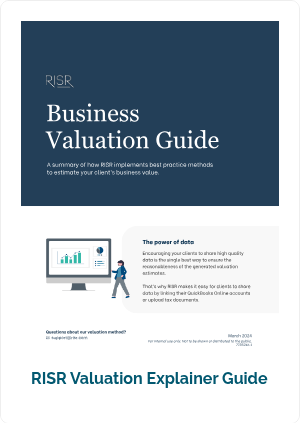Business Valuation: Equity Value v. Enterprise Value
When working with business owners as a financial advisor, it’s important to focus on the Equity Value within the business. This is a nuanced difference from Enterprise Value and is intentional.
Enterprise Value reflects the value of the business or firm itself.
- Businesses use a combination of equity and debt to finance their value-driving assets
- Enterprise Value includes the value of this equity and debt, making it easier for potential buyers to compare businesses with different mixes of equity and debt (referred to as capital structure).
- For this reason, Enterprise Value is most relevant to hypothetical buyers of the business.
Equity Value reflects the value of the equity in the business.
- In the event of a sale, debt liabilities would first need to be satisfied with excesses in liquid assets
- The remaining value represents Equity Value, the value the shareholders are owed
- This reflects the value that owners of the business could expect to receive in the event of a sale
- For this reason, Equity Value is most relevant when developing comprehensive financial plans with business owners
To help financial advisors working with business owners, RISR automatically estimates the value of all the equity in the business (Equity Value) as well as the value of the equity owned by the client (in cases where the client does not own 100% of equity).
How RISR estimates business valuation for financial planning
RISR follows these steps to estimate the Equity Value of client's business:
- Apply three best practice methods to estimate Enterprise Valuation (detailed below)
- Add net working capital to and subtract interest-bearing debt from each Enterprise Value output to estimate Equity Value
- Aggregate estimates of Equity Value to identify and remove any outliers across methods
Equity Value = Enterprise Value + Net Working Capital - Interest-bearing Debt
The three methods RISR uses to estimate Enterprise Value are:
For a detailed look into each of these methods and how they are applied in RISR, download our Valuation Explainer Guide.
